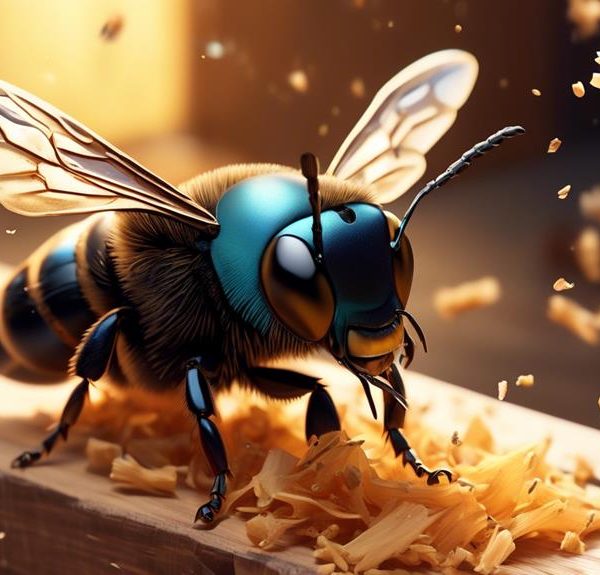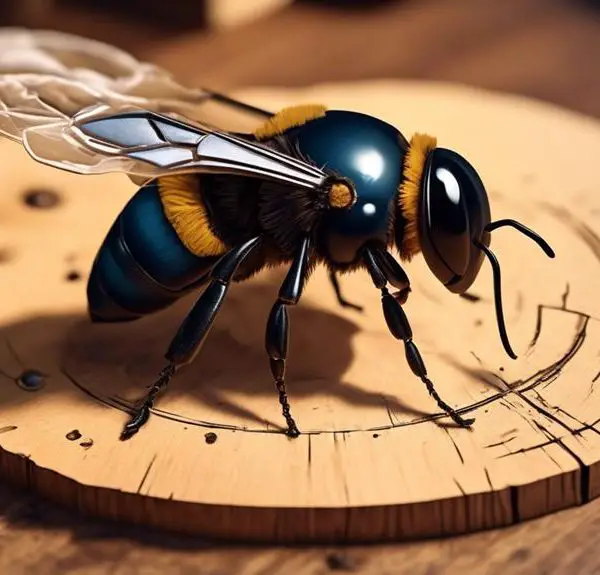Wondering what sounds a carpenter bee makes? Discover the unique auditory world of these fascinating insects and how they communicate.
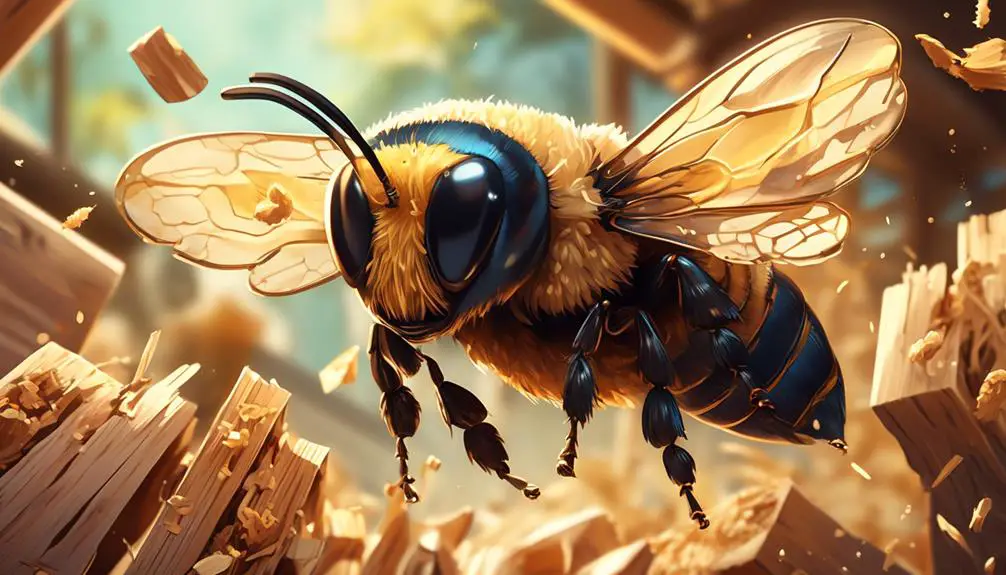
What Sound Does a Carpenter Bee Make
Did you know that over 500 species of carpenter bees exist worldwide? You've likely encountered these fascinating insects, recognized by their robust body and metallic sheen, but have you ever stopped to consider the sounds they make?
Unlike other bees, carpenter bees create distinctive sounds, not just with their wings, but also by boring into wood. And just as intriguing, these sounds serve more than a mere functional purpose; they're also a form of communication.
Want to know more? Stick around to uncover the auditory world of these industrious insects.
Key Takeaways
- Carpenter bees produce a distinctive buzzing sound, which is a result of their rapid wing movement.
- The buzzing sound can vary in pitch, with a low-pitched buzz indicating slower wing beats and a high-pitched buzz when bees are alarmed or threatened.
- Carpenter bees also create a high-pitched and rhythmic noise while boring into wood, which can cause significant damage to wooden structures.
- Carpenter bees use a range of sounds, including buzzing, clicking, and humming, for communication, social interaction, mating rituals, and navigation to their nests.
Understanding Carpenter Bees
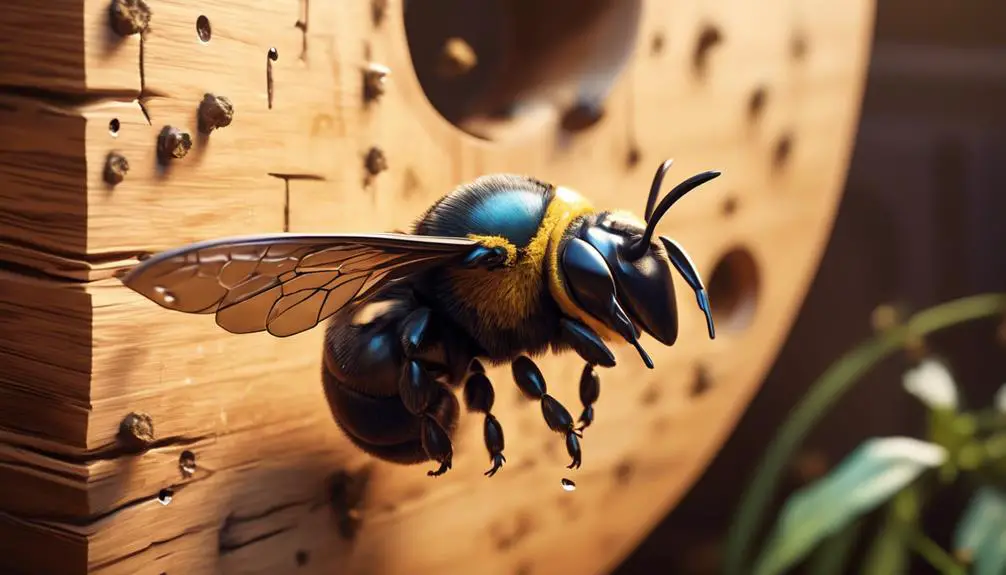
To fully appreciate the unique sounds of carpenter bees, it's essential to first understand these fascinating creatures themselves. Carpenter bees, belonging to the genus Xylocopa, are large, robust insects recognized for their shiny, mostly black bodies. Unlike their honeybee counterparts, carpenter bees are solitary creatures. Each female independently seeks out softwoods, such as pine or cedar, to excavate nests, hence their moniker.
You might be surprised to learn that, unlike termites, carpenter bees don't consume the wood. Instead, they tunnel through it to create galleries for their offspring. These tunnels, often a foot long, house individual cells where the female deposits an egg alongside a food store of nectar and pollen. As the larvae grow, they consume this food, metamorphose into adults, and eventually emerge to start the cycle anew.
The Distinctive Buzzing Sound

You'll likely recognize a carpenter bee by its distinctive buzzing sound, a low-pitched drone that can be heard when they're near or in their wooden nests. This unique buzz is a result of the bee's rapid wing movement, which generates vibrations in the air around them.
Now, let's break down this buzzing sound more scientifically.
Frequency of Buzzing | Cause |
|---|---|
Low-Pitched | Produced due to the slower wing beats |
High-Pitched | Generated when bees are alarmed or threatened |
Intermittent | Reflects the bee's resting periods |
Continuous | Indicates active foraging or defending the nest |
Each specific sound provides valuable information about the bee's current state and activity. For instance, a high-pitched buzz often signals that the bee is threatened and might soon resort to stinging. On the other hand, a continuous low-pitched hum could mean the bee is busy collecting food or protecting its nest.
Being able to differentiate these sounds not only increases your understanding of these fascinating insects but also enables you to respond appropriately in their presence. So, keep your ears tuned for the distinctive buzz of the carpenter bee.
Wood-Boring Activities and Noise
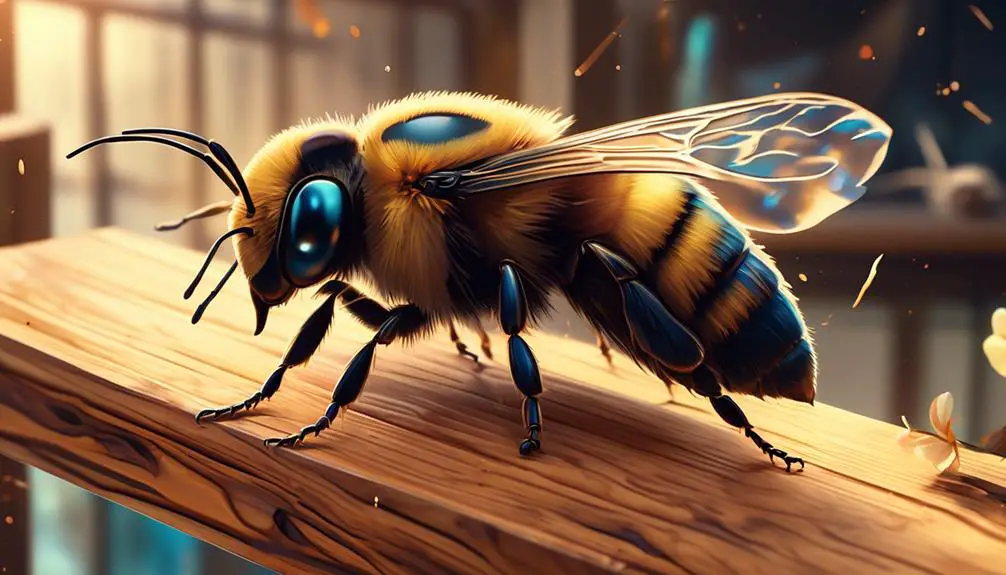
Aside from their signature buzz, carpenter bees produce another distinctive sound: the noise of their wood-boring activities. When you're near an infested wood structure, you might hear a faint but persistent chewing or grinding sound. This is the sound of the female bee's strong mandibles gnawing through the wood to create nesting galleries, a process known as xylophagy.
The sound isn't loud, but because it's high-pitched, it can be quite noticeable in a quiet setting. It's a telltale sign of a carpenter bee nest. The noise is produced in a rhythmic pattern, mirroring the bee's methodical excavation efforts. The bee doesn't eat the wood but discards it as she tunnels, creating small piles of sawdust beneath the nest entrance.
These wood-boring activities can cause significant damage to wooden structures over time, especially if the infestation is large and left untreated. Each female bee can excavate a tunnel approximately one foot long per season. These tunnels weaken the structural integrity of the wood, leading to costly repairs if not addressed promptly.
Communicative Sounds of Carpenter Bees

In the complex world of carpenter bees, they use a range of sounds not only for boring into wood but also to communicate with each other. These woodworkers of the insect kingdom have developed a unique acoustic language to convey various messages.
You might wonder: what do these communicative sounds entail? Well, it's quite intriguing. The primary sounds are buzzing, clicking, and humming. Buzzing is typically a warning indicating they're feeling threatened. If you're too close, you'll likely hear a rapid, high-pitched buzz, signaling it's time to back off.
The clicking and humming sounds, though, are more about social interaction. Bees make these noises during mating rituals and to communicate their location to others in their colony. Males often generate a series of clicks as a courtship song to attract females. The humming, on the other hand, acts as a beacon for bees returning to their nests.
In essence, these sounds form a crucial part of their survival strategy, playing a significant role in their mating, colony formation, and defense mechanisms. So, next time you hear a carpenter bee, remember, you're listening to a unique insect language.
Impacts of Carpenter Bee Sounds
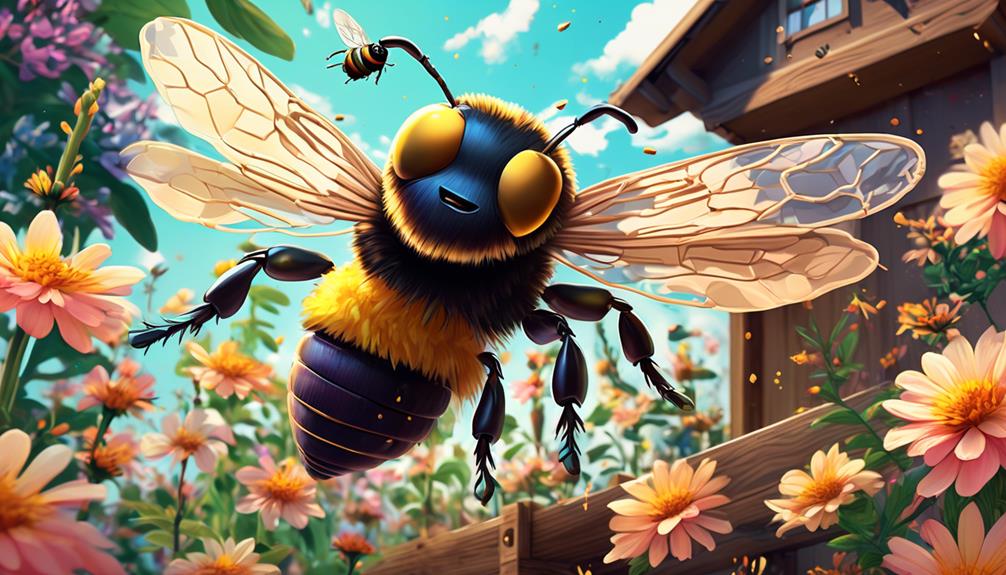
Understanding the impacts of carpenter bee sounds can provide valuable insights into their behavior, population dynamics, and ecological implications. You'd be surprised to know that these sounds aren't just random noise; they're a form of communication that's critical to the bees' survival.
The sounds they make can alert other bees to food sources or warn them of danger. In a way, these sounds help regulate the bee population. If there's a scarcity of resources, the bees' buzzing could diminish, signaling fewer bees to join the colony. On the other hand, an abundance of food would lead to louder, more frequent buzzing, attracting more bees.
These sounds also have ecological implications. Predators and parasites can eavesdrop on the buzzing, using it to locate the bees. This adds another layer of predator-prey dynamics in the ecosystem. Additionally, the sounds of these bees can serve as bio-indicators. A change in their sound patterns could indicate environmental changes, such as habitat loss or climate change.
Therefore, understanding the sounds of carpenter bees doesn't only give us a peek into their world, but it also helps us gauge the health of our ecosystems.
Conclusion
In conclusion, you now know that the sound of a carpenter bee is unique.
Their distinctive buzzing, wood-boring noises, and communicative sounds not only signify their presence but also their activities.
Understanding these sounds can help you detect their presence and act accordingly.
Despite being a nuisance, these sounds play an integral role in their survival and communication.
Remember, while their noise may be bothersome, these bees play a vital role in our ecosystem.

